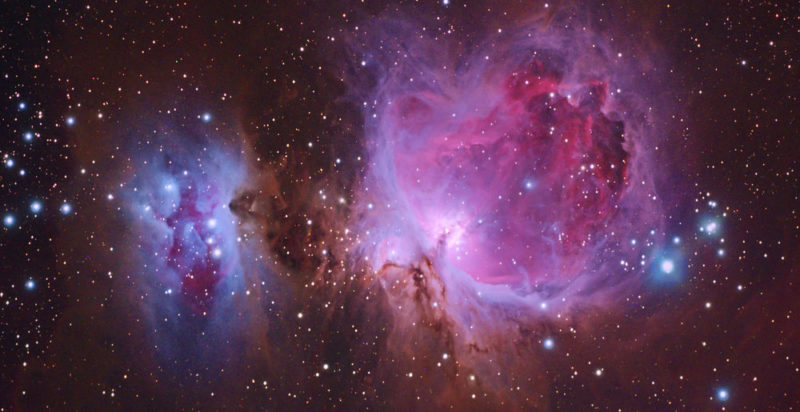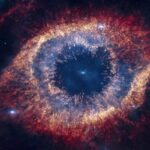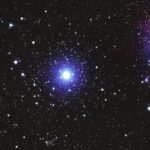We explain what the Orion Nebula is, some of its characteristics and how it was discovered.

What is the Orion Nebula?
It is known as the Orion Nebula, also called Messier 42, M42 or NGC-1976, a one of the brightest nebulae that exist in the sky observable from Earth, located right in the constellation of Orion, about 1270 to 1276 light years from our planet. It has a diameter of 24 light years and is one of the most studied and photographed astronomical objects of all time, visible to the naked eye in some regions of the planet.
It is worth clarifying that a nebula is a region of space in which large masses of gas (mainly hydrogen and helium) gather together with other chemical elements that make up cosmic dust. In many cases, these nebulae are the birthplace of stars due to the effects of condensation and gravitational attraction. But they could also be the remains of extinct stars.
The Orion Nebula is part of a huge gaseous cloud located at the heart of the constellation of the same name, and which also feeds the Barnard loop, the Horsehead Nebula, the Mairan Nebula, the M78 Nebula and the Orion Nebula. Flame. Within it there is a high production of stars so the dominant light spectrum is infrared, due to the caloric emission of said process. Furthermore, its shape is almost spherical, reaching a central density almost twice that of its periphery, and it is composed of stellar clouds, star clusters, H II regions and reflection nebulae. At its highest points, it reaches a maximum temperature of about 10,000 degrees kelvin (K).
The name of the Orion Nebula comes from the constellation where it is located heritage in turn from Greek mythology. It told different versions of the life of Orion, a great hunter mentioned in Homer's Odyssey, and to whom various mythical feats are attributed, as well as his death before a gigantic scorpion (immortalized, in turn, in the constellation of Scorpio).
See also: Asteroid belt
Discovery of the Orion Nebula
According to many sources, The ancient Mayans would have noticed the celestial region where this nebula is located which they called Xibalbá. According to his imagination, the gas cloud evidenced the presence of the very furnaces of creation.
The West discovered the Orion Nebula in 1610 and it is attributed to the Frenchman Nicolas-Claude Fabri de Peiresc, as written by Cysatus of Lucerne, a Jesuit astronomer in 1618. Much later it would be included in Charles Messier's Catalog of Astronomical Objects in 1771, corresponding to the name M42.
Its nebulous nature would not be discovered until 1865 thanks to the spectroscopy of William Huggins, and in 1880 his first astrophotography, the work of Henry Draper, would be published. The first direct observation of the nebula was a product of the Hubble space telescope in 1993, thanks to which (and its numerous subsequent observations) even subsequent three-dimensional models have been made.
References
- “Orion Nebula” on Wikipedia.
- “M42 – The Orion Nebula” in Atlas of The Universe.
- “A journey through the Orion Nebula” in Very Interesting.
- “Flight through Orion Nebula in Visible and Infrared Light” (video) at NASA.
- “Orion Nebula” in The Encyclopaedia Britannica.





